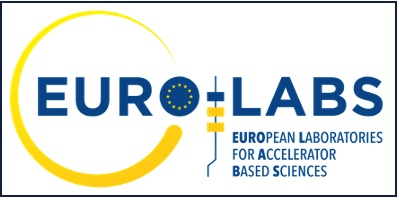Description
This study aims to precisely measure the hyperfine structure (HFS) constant A, in neutron-rich potassium isotopes [1]. The in-beam laser-rf double-resonance spectroscopy [2] in a collinear geometry will be performed to obtain the relative precision of up to 10-4. This method, which has previously been applied only to stable isotopes, brings significantly enhanced precision through the use of RF excitations between substates of the ground hyperfine structure multiplet. In our experimental setup, an ion beam is optically pumped before it enters a 2-meter-long region, where it propagates collinearly with a traveling RF wave. When the RF frequency is resonant with the energy difference between two adjacent hyperfine sublevels, it allows the population of ions to transition. Then the beam enters the probing zone, where optical photons are monitored and detected.
The A factor obtained, will be combined with the magnetic dipole moments measured using -NMR technique [3] to calculate the magnetization distribution within the neutron-rich nuclei. The data interpretation will be done with the help of nuclear density functional theory approach with angular momentum symmetry restoration [4] using HFODD code [5]. These findings will provide valuable benchmarks for refining nuclear models and advancing our understanding of the magnetic properties and structure of neutron-rich isotopes.
References:
[1] K. Kreim, M.L. Bissell, J. Papuga, et.al, 731 Phys. Lett. B (2014) 97-102.
[2] M.E. Van Hove and R.E. Silverans, Hyperfine Interactions, 38 (1987) 773-792.
[3] R. D. Harding et al., Phys. Rev. X 10 (2020) 041061.
[4] P.L. Sassarini et al., J. Phys G 49 (2022) 11LT01.
[5] J Dobaczewski et al., J. Phys. G: Nucl. Part. Phys. 48 (2021) 102001; and to be published.
| Work-package | WP2 - RIs for Nuclear Physics |
|---|---|
| Facility identifier | ISOLDE |
